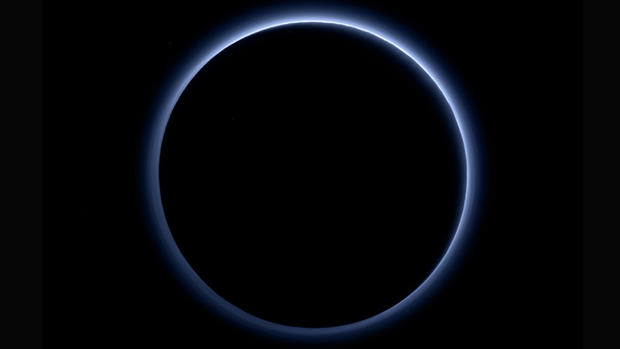Blue skies and red ice on Pluto
"Who would have expected a blue sky in the Kuiper Belt?" mused Alan Stern, New Horizons principal investigator from Southwest Research Institute, upon seeing the latest images sent back from the edge of the solar system. "It's gorgeous."
Here on Earth, tiny particles in the atmosphere scatter sunlight, resulting in the appearance of a blue sky. According to a new picture from New Horizons released Thursday, the same thing is happening in Pluto's haze layer, though with different particles. "On Earth, those particles are very tiny nitrogen molecules," explained New Horizons science team researcher Carly Howett in a statement. "On Pluto they appear to be larger -- but still relatively small -- soot-like particles we call tholins."
It is believed that the particles themselves, formed through sunlight-fueled reactions of nitrogen and methane, are likely gray or red. The NASA image was generated by software that combines pictures taken at different wavelengths to replicate what the scene would look like to the human eye.
Tholins from the high atmosphere are broken apart and recombine as they fall toward the dwarf planet, where they contribute to Pluto's red color.
Recent color pictures from New Horizons' July flyby of the dwarf planet showed areas of bright red. And compared with a second image from Thursday, it appears that some of these red regions correspond to newly identified patches of exposed water ice (shown in blue in the photo, above).
"I'm surprised that this water ice is so red," said Silvia Protopapa, a science team member from the University of Maryland, College Park. "We don't yet understand the relationship between water ice and the reddish tholin colorants on Pluto's surface."
NASA said the New Horizons spacecraft is operating smoothly on its course. It is currently 3.1 billion miles from Earth. It will take a year and a half for craft to return all the images taken during its close encounter with Pluto.

